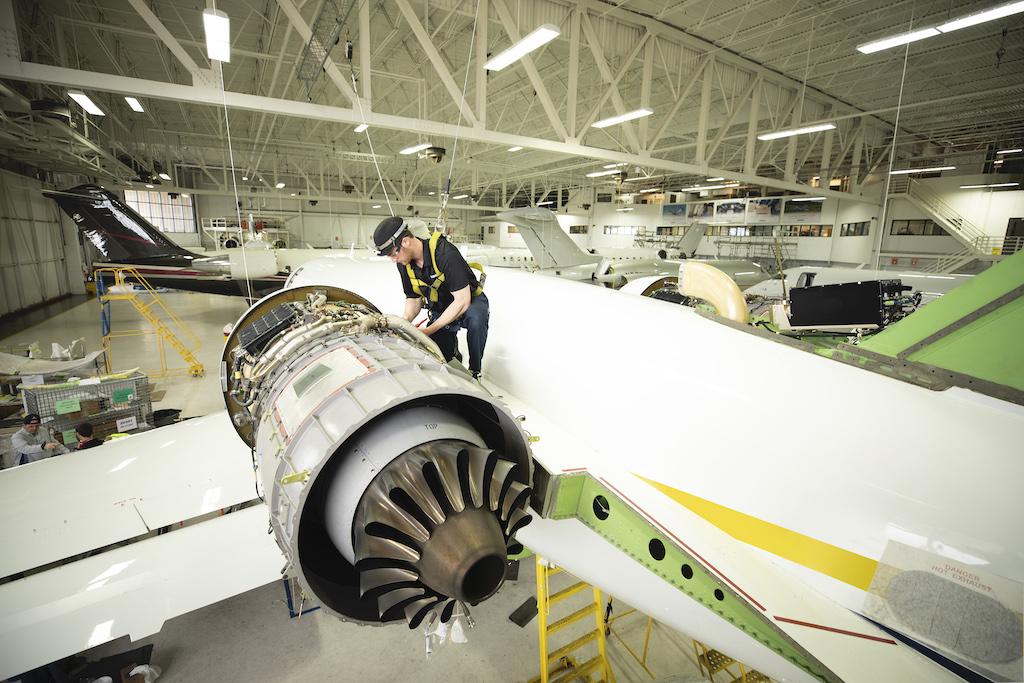
Bombardier is rolling out a new aftermarket plan that places a bigger emphasis on an aircraft’s entire lifecycle—including offering used service material and teardowns.
This is a departure not only for the OEM but for most aviation and car manufacturers. “The traditional sweet spot for OEM involvement is on younger aircraft. You’d see that in the automotive industry as well, because younger cars tend to go to the dealership more than older cars,” says Jean-Christophe Gallagher, Bombardier’s executive vice president, services and support, and customer strategy.
To support the whole lifecycle for its aircraft—about 5,000 of which are flying—Bombardier is in the process of expanding its global service network by 50% in the next 18 months. It is enlarging or making changes to its facilities in the U.S. (Miami Opa Locka Airport), Europe (London Biggin Hill Airport and Berlin Schoenefeld), Singapore (Singapore Seletar) and Australia (Melbourne Essendon Airport). That expansion will allow it to simultaneously service 300 aircraft within its network—and “be more active in some areas of the lifecycle that we were not as active in before,” such as refurbishment, pre-owned inspections and aircraft teardowns, says Gallagher.
“The reason why I’m so interested in this is because there are great opportunities for airplanes later in life that have a perfectly good airframe and perfectly good engines but have dated connectivity systems or interiors. Or planes just need a fresh coat of paint. We want to take those older planes and refurbish and upgrade them to add value to the aging fleet,” says Gallagher.
Expect the OEM to refurbish and retrofit more pre-owned Bombardier aircraft as its network of MRO facilities expands.
For customers with the oldest aircraft, aircraft teardowns provide lower-cost used rotable parts for its service center network but also provide “an opportunity for us to be in a conversation with customers for the replacement product now that the asset is no longer interesting to them,” Gallagher says. “For us, this involvement across the ownership lifecycle isn’t always a direct business opportunity for the aftermarket but it is good business practice to be involved as a company throughout the chain of experiences that a customer could have.” He expects other OEMs to soon follow this model.
In addition to investing in its MRO infrastructure, Bombardier also is investing in digital infrastructure. It is offering a free retrofit of its SmartLinks Plus aircraft health monitoring program to Global and Challenger customers. The retrofit allows the aircraft to be connected to Bombardier via a live link as they operate so Bombardier can troubleshoot or send a part faster if an issue arises. Gallagher says it is booking retrofits for the Western Hemisphere summer.
He expects the combination of building the physical and digital infrastructure “will bring a whole new level of customer satisfaction in operating a Bombardier product.”
Bombardier plans to grow its aftermarket share from 30% of the total worldwide market for its jets to 50% in 2025. From a revenue standpoint, this equates to expanding the aftermarket business to $2 billion in four years from $1.2 billion in 2019.
Bombardier sold its Transportation business to Alstrom on Jan. 29, making it now solely focused on business aviation.





